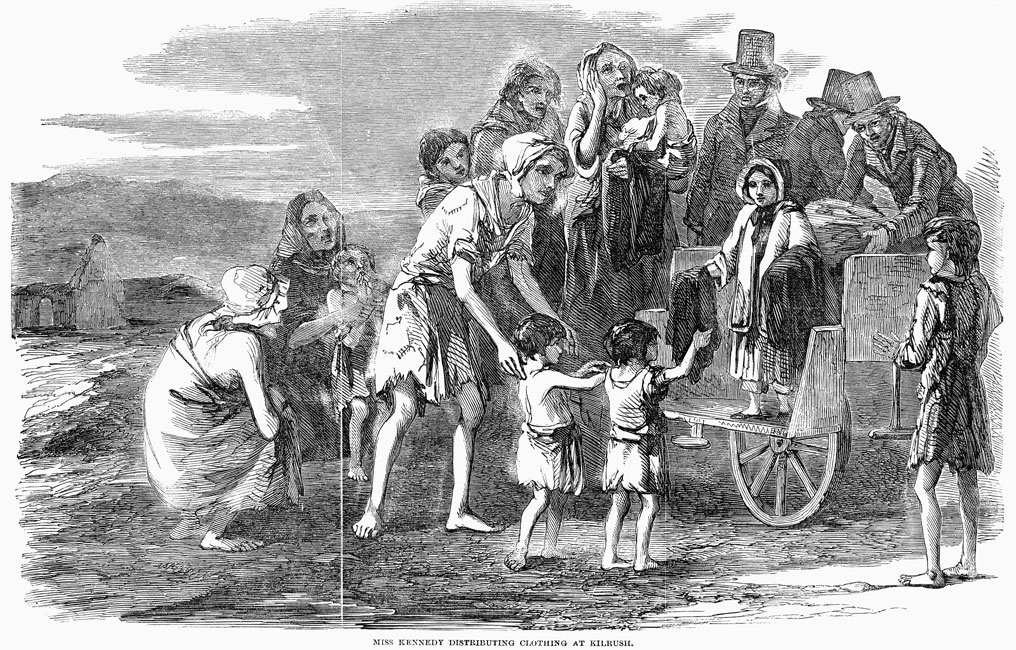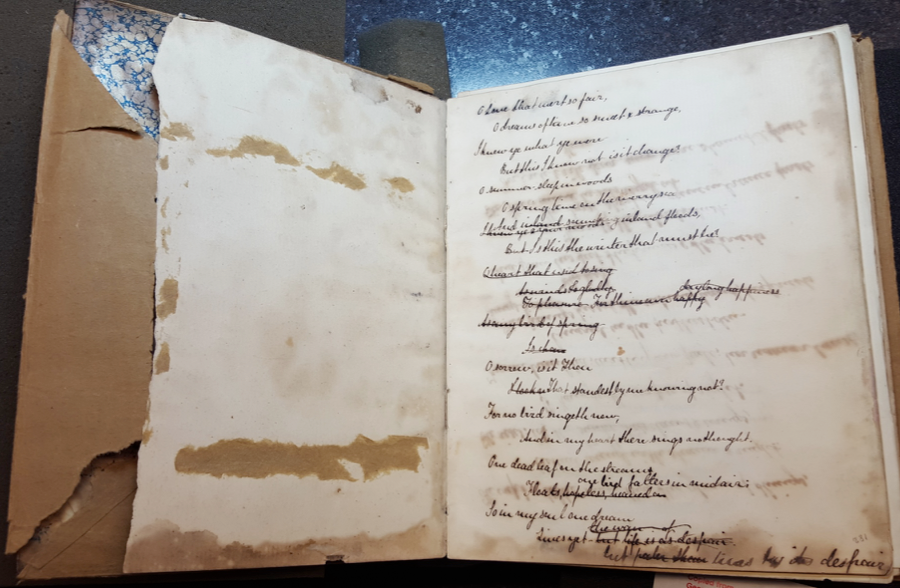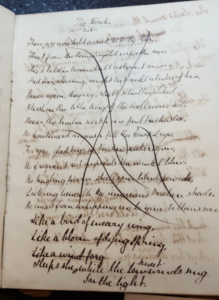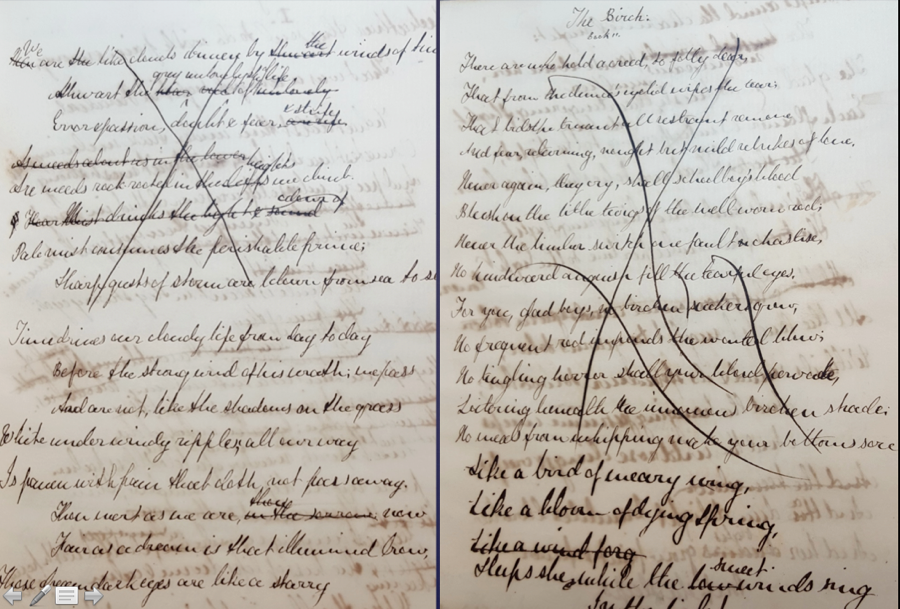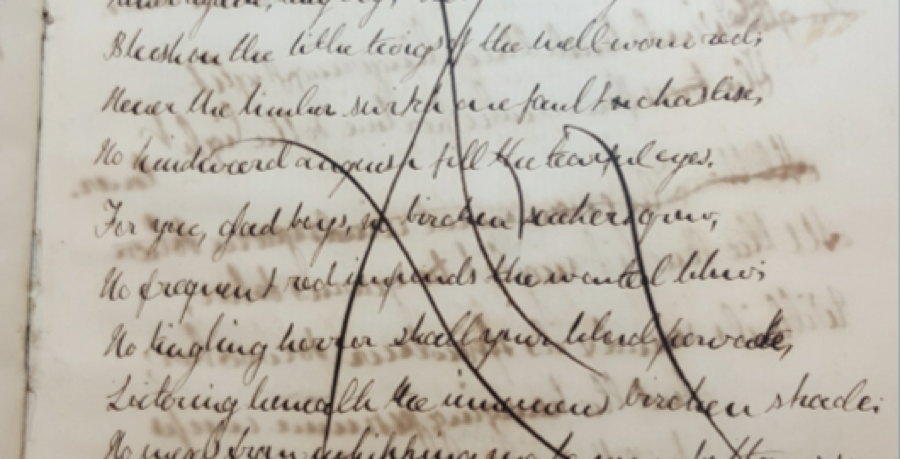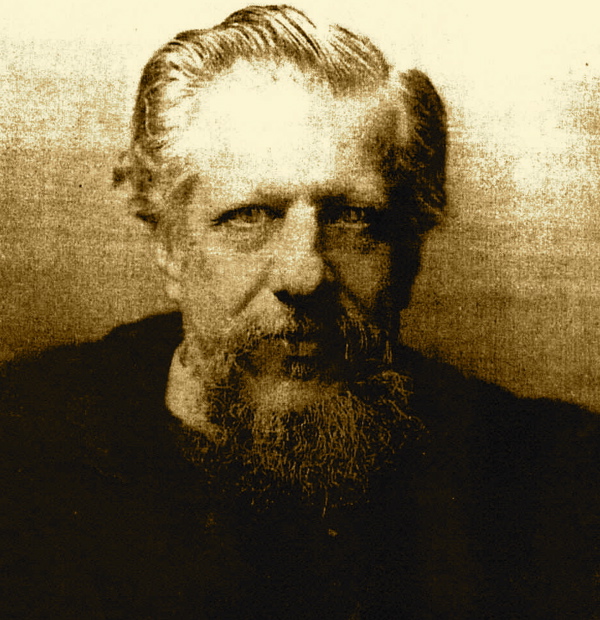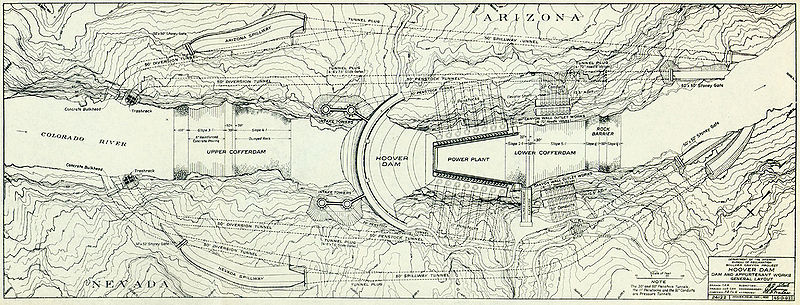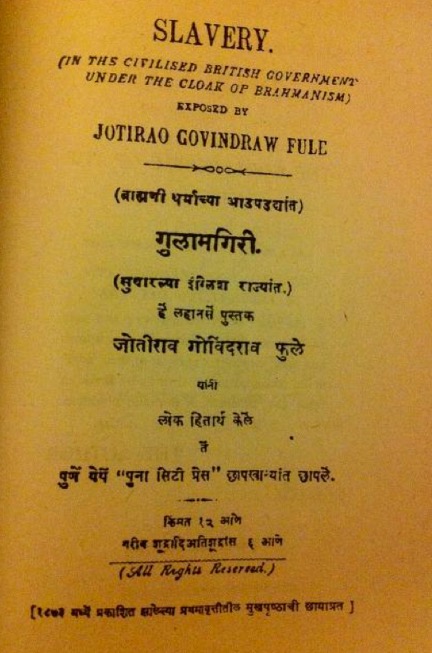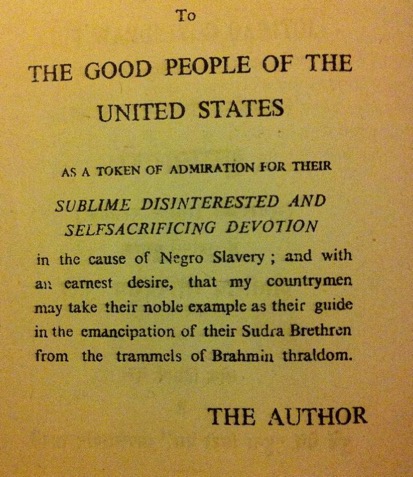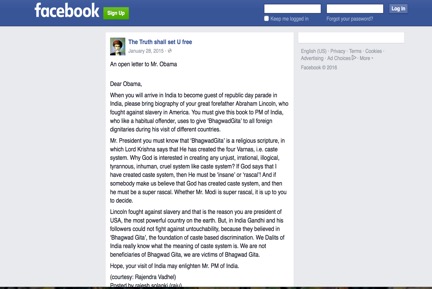by Bruce Robbins
The closing day featured a formal keynote address by Bruce Robbins, followed by responses. While the keynote practices a rousing, engaged, presentist, theoretical Victorian studies, the responses by Zach Samalin and Molly Clark Hillard, and the heated discussions at the symposium, point to other futures. Elaine Hadley integrated a number of the arcs of discussion while also highlighting what remains to be argued. We are grateful to b2o for providing this catalyst for yet more.
This essay was peer-reviewed by the editorial board of b2o: an online journal.
Toward the end of Michael Ondaatje’s novel The English Patient (1992), the young Canadian ex-nurse Hana writes in a letter home to her stepmother: “From now on, I believe the personal will forever be at war with the public” (Ondaatje 1992, 292).
Hana has just heard about the bombing of Hiroshima and Nagasaki, news that has shocked her Sikh lover Kip into leaving both her and the anti-Nazi war effort. The unending war between the public and the personal that Hana dates “from now on” is the result of what we have come to call an atrocity: an act of extreme cruelty that is collective, unnecessary, and indiscriminate, the latter two adjectives judged to apply because (here I quote Jacques Sémelin’s definition of “massacre” in his book Purify and Destroy) it is “aimed at destroying non-combatants” (Sémelin 2007: 4). I will withhold comment for now on whether the war between the public and the personal (which echoes a vocabulary put in play a few years earlier by Fredric Jameson) is as new as Hana thinks; it sounds pretty Victorian to me. But the atom bomb was definitely new. And as a concept, the atrocity is also pretty new. The idea of the “non-combatant” dates only from the Napoleonic Wars. Both “non-combatant” and “atrocity” would seem to require the modern weakening of membership–the still recent assumption that individuals should not be held responsible for actions taken by the families or nations to which they belong. “Cruel” and “fierce,” the meanings of “atrox,” the Latin source word for “atrocity,” did not begin their lives as pejoratives, but picked up pejorative meanings only as physical violence came to seem a less dependable aspect of ordinary lives, something that generally could and should be avoided. The re-classification of violence as out of the ordinary is again associated, perhaps only wishfully, with modernity.
But you only feel how very modern Ondaatje’s naming of the atom bomb as atrocity is when you add one more element. Kip and Hana are recoiling from an action performed by their own side. This is a moment of civilizational self-accusation. It belongs to the very special subset of atrocity-response in which “we” accuse ourselves of doing something outrageously cruel, collective, and indiscriminate to “others.”
Yes, Ondaatje is a Canadian and a Sri Lankan; Kurt Vonnegut’s Slaughterhouse Five might have been a better as well as an earlier example. And yes, to play up the look-at-us-admitting-the terrible-things-we-did-to-others criterion, as I’m preparing to do, could be seen as a celebratory re-write of Enlightenment self-scrutiny, in other words as a way of once again giving credit to the modern West for a virtue on which it has often prided itself, perhaps excessively. Undeterred by these objections, I am going to forge ahead, assigning atrocity as self-accusation an important part in the long-term moral history of humankind and indicating a desire, at least, to place the novel within that larger history. This of course assumes there exists such a thing as the long-term moral history of humankind. It assumes that history need not be understood as a finer and finer discrimination of differences (a habit that I think the V21 group has very usefully expressed its impatience with) but can also be thought of as a series of experiments in the synthesis of differences—bold generalities, even “grand narratives.”
It’s from the perspective of the long-term moral history of humankind that the question of atrocity is most interesting, and most humbling, for specialists in nineteenth-century British literature. In the late 1970s, the editors of the journal New Left Review conducted a book-length series of interviews with Raymond Williams. The interview that hit me hardest at the time dealt with Williams’ admiration for the novels of the 1840s, about which I had just heard him lecture.[i] “In that decade,” the interviewers say,
there occurred a cataclysmic event, far more dramatic than anything that happened in England, a very short geographical distance away, whose consequences were directly governed by the established order of the English state. That was of course the famine in Ireland—a disaster without comparison in Europe. Yet if we consult the two maps of either the official ideology of the period or the recorded subjective experience of its novels, neither of them extended to include this catastrophe right on their doorstep, causally connected to socio-political processes in England. (Williams 1981, 170)
If this is true for catastrophic events in Europe, how much more true is it, the interviewers ask, for more distant colonies like India, where events were again directly affected by the imperial system?
The NLR interviewers are asking us to imagine that even the English literature of the 1840s we most admire today was unable to represent disasters or cataclysmic events for which England was itself responsible, directly or indirectly. It does not seem implausible that atrocity-representation in the narrow, self-accusatory sense might simply be missing from the history of the 19th century novel. If you think of its greatest works, direct representations of any atrocity are certainly not the first things that come to mind. We know our authors could express horror at the 1857 Mutiny in India or the Bulgarian Atrocities (committed by the Ottomans) or King Leopold’s mischief in the Congo or the occasional scene of mob violence. But perhaps they simply could not summon up any English equivalent to Vonnegut’s horror at the Allied bombing of Dresden. Perhaps the English could not imagine accusing themselves, at least not from the viewpoint of the non-English, at least not when the accusation would have been damning. Were we to accept this hypothesis, which I offer up here as nothing more than a hypothesis, it seems clear that some of the going rationales for nineteenth-century studies, and maybe even for literary criticism in general, would be in jeopardy.
In self-defense, we could of course argue that the criterion of self-accusation is unacceptably presentist. How could one expect the great epoch of European realism to “do” atrocity in the particular, self-accusing sense? Arguably such representations only became possible after European civilization has been shocked out of its pre-Copernican complacency by, for example, the Holocaust and the rise of anti-colonial movements. In the nineteenth century, those shocks were still to come. It would therefore be anachronistic to expect European literature to have re-set its default settings, which were presumably nationalist or at least national, and to have experimented even intermittently with cosmopolitan self-consciousness. Another field-defensive move would be to focus on the canon’s experimental outliers. As some of you probably know, there exists a body of scholarship qualifying the claim that outside Ireland the Irish Famine did indeed go unrepresented. Much of that scholarship deals with minor works by Trollope. To me, those works seem both aesthetically and politically uninspiring. But perhaps one can do better. More inspiring, among the potential counter-examples, would be Multatuli’s 1860 novel Max Havelaar: Or the Coffee Auctions of the Dutch Trading Company, which has been credited with starting the anti-colonial movement in Indonesia. Or Tolstoy’s final work of fiction, Hadji Murat.
Hadji Murat is set during the mid-19th century Russian conquests of the East that Tolstoy himself participated in as a young man and that so neatly mirror the genocide of the Native Americans that the US was carrying out in the same years in the American West. At one point it describes the destruction of an indigenous village in the Caucasus in what would now be called Chechnya. Tolstoy shows us the army’s burning of the Chechen village through the eyes of a Russian soldier. The Russian’s mind is elsewhere, preoccupied with a theme that could not be more conventional for people like him: money he has lost at cards. For him it is an unremarkable day, so the reader sees nothing remarkable: “War presented itself to him only as a matter of subjecting himself to danger, to the possibility of death, and thereby earning awards, and the respect of his comrades here and of his friends in Russia. . . . The mountaineers [he does not call them Chechens] presented themselves to him only as dzhigit horsemen from whom one had to defend oneself” (Tolstoy 2009: 78). Given this failure of imagination on the Russian side, the narrator must step in and, somewhat intrusively, make a connection on the next page that no one within the novel’s world is there to make:
The aoul devastated by the raid was the one in which Hadji Murat had spent the night before his coming over to the Russians. . . . When he came back to his aoul, [Sado, at whose house we have seen Hadji Murat greeted hospitably in the novel’s first scene despite the extreme danger the host is in] found his saklya destroyed: the roof had fallen in, the door and posts of the little gallery were burned down, and the inside was befouled. His son, the handsome boy with shining eyes who had looked rapturously at Hadji Murat, was brought dead to the mosque on a horse covered by a burka. He had been stabbed in the back with a bayonet. (Tolstoy 2009, 79).
The sentence about the child bayoneted in the back does not end the paragraph. There is no pause for the drawing of conclusions, moral or otherwise. It’s as if, from a Russian point of view, a Chechen child who has been bayonetted in the back is not ethically or emotionally forceful enough to interrupt the flow of narration, not enough to justify even the briefest of hesitations. It’s not surprising that Tolstoy could not get that book published in full in his country in his lifetime. It’s surprising that he left this record at all.
Something could no doubt be said about the depiction in nineteenth-century literature of the poor and the homeless as internal aliens, hence sufficiently “other” to count as victims of atrocity in my limited sense. I’m thinking of, say, Victor Hugo (the army firing on the barricades in Les Misérables) or Bleak House’s description of the death of Jo: “And dying thus around us every day” (Dickens 1998, 677). One could also go back to the criterion that the NLR interviewers apply to Raymond Williams (and that Williams himself does not dispute): the premise that criticism should aim to reconstruct, through literature, “the total historical process at the time” (Williams 1981, 170). Who says the novelists of the 1840s were obliged to talk about the Irish Famine, a (to them) invisible part of the (to us) larger causal system?[i] Perhaps this is asking for something the novel simply could not and even cannot deliver. Perhaps we should content ourselves with what it can deliver, even if that seems a humbler thing. This line of thinking may have encouraged some critics to urge a dialing back of the political and ethical claims we make. A modest anti-presentism of this sort would certainly make it easier for those 19th century specialists who are professionally uncomfortable with atrocity to return to what they were already doing, undisturbed by any nagging sense of responsibility to imperatives they see as coming from outside the field.
My own impulse is not to back down from “the total historical process” criterion. Which means I’m stuck with atrocity, however presentist the topic may seem. What I’d like to try out therefore is a different negotiation between present imperatives and period loyalties, between history as the proliferation of differences (differences that may turn out to be trivial) and history as synthesis (synthesis that avoids triviality but could seem to lack rigor as the field defines it).
The concept of atrocity may be new, but the thing of course is not. It seems admirable to me that much new scholarship is willing to hold off on the familiar nominalist-historicist move (there is no true history but the recent history of the name, the concept) and instead to take on the deeper history of as yet unnamed things, a trans-historical history much of which (like the atrocity) is inescapably pre-modern. I’m thinking for example of the thunderous “no!” to periodization itself that is proclaimed in Susan Stanford Friedman’s Planetary Modernisms and the challenge to “periodizing divisions between premodern and modern” in the introduction that Saher Amer and Laura Doyle wrote to ”Reframing Postcolonial and Global Studies in the Longer Durée,” a special section of the latest PMLA (Friedman 2015, 331). Both texts accuse conventional periodization of sustaining Eurocentrism. It seems to me that both share important concerns with the V21 manifesto and its impatience with period-centered thinking.
I hope you agree that the V21 project belongs in the context of a broader acknowledgment that learning to work in an enlarged, trans-period time scale is no longer optional. The reasons behind this new temporal common sense are not unfamiliar, but it may be helpful to gather a few of them together. Among the best known is the emergence of the term “anthropocene” to mark the salience of an ecological perspective at the level of the planet. Among the least known is the emergence of an international movement of indigenous peoples, one premise of which is that colonialism is not something done solely by European settlers or done solely after 1492. Joining the two are books like Pekka Hämälainen’s The Comanche Empire, which gives the Comanches credit, if that’s the right word, for themselves practicing colonialism, and justifies their conduct (again, if justifying remains a pertinent concept) in terms of their superior ecological adaptation. Logically enough, the new sub-disciplines of “world” history and “big” history are notable for an impulse, sometimes conscious and sometimes not, to do without moral judgment entirely. Some declare that to arrange history around the values of “democracy,” for example, would be inexcusably teleological and provincial. The same vector appears in another important zone of temporal stretching: the postcolonial critique of Eurocentrism. Here of course it seems even more paradoxical, dependent as postcolonial studies has been on a politicized model of European core, non-European periphery. But as Alexander Beecroft has argued, this model, useful enough for the recent past, simply doesn’t apply for most of the world’s cultures during most of the world’s history. China and India two or three or four thousand years ago were in no sense peripheries to Europe’s core. It would be temporally parochial, therefore, to take the particular inequalities and injustices of the recent past as a guide to the interpretation of Indian or Chinese culture. Thus the cosmopolitanism with which we are most familiar, call it cosmopolitanism in space, brings with it a corresponding cosmopolitanism in time, and this temporal cosmopolitanism ends up undermining habits of ethico-political judgment based on an outmoded core-periphery geography. Here I am re-describing the emergence of a somewhat depoliticized “world literature” out of a very political “postcolonial studies.” For better or worse, re-describing it in this way makes it harder to complain about.
Expanding our time-frame seems inevitable. As does some evening out of the blame for imperialism, which can no longer seem the moral burden of Europe alone. The long-term question for V21, it seems to me, is how to manage this expansion beyond the period while sustaining the moral and political commitments that make the critical enterprise worth doing at all. The immediate question is where in this revisionist scale and sense of history I can find a home for my interest in atrocity, an interest that takes for granted the centrality of critique.
From this perspective, the first thing I notice about interesting new work on an expanded time-scale is that atrocity tends to get left out. For Amer and Doyle, the familiar European version of imperialism was only one in a long series of imperialisms before 1500, many of them non-European. Rather than insisting that the presence or absence of capitalism made all the difference, they suggest, we need to find a way of talking about European and non-European imperialisms in the same breath. That seems right. But what this can mean in practice is that imperialism’s violence is omitted, perhaps because it is assumed that moral critique of imperialism would be anachronistic and/or Eurocentric or because blaming has come to seem pointless and irrelevant. Hence there is no vocabulary for atrocities. Historically speaking, Amer and Doyle are gradualists. The premodern for them was already modern; the difference is merely a matter of detail and degree. From their moderate anti-periodization position, anything that looks like violent rupture, such as modernity, is actually always the result of small, slow accretions. It’s as if their distaste for violent rupture at the level of periodization is duplicated in a distaste for violence as social content. Violence exists for them, of course, but not as a conundrum; it’s not interesting enough to demand interpretation. What’s interesting about the world’s interconnectedness is commercial contact and cultural exchange. There are empires, but when it’s pre-moderns or (especially) non-Europeans who are doing the slaughtering and conquering, what suddenly kicks in is a great deal of respect for the empire-builders and for the cultural consequences of their empire- building. Coercion is not absolutely forgotten, but it’s rarely stage center. This is arguably just as presentist as the older focus on domination and atrocity, but it’s presentist in a different way: a projection onto the past of globalization’s smug, all-cultures-are-equal case, a case which does not harp on inequalities of economic and political power.
The closest Susan Stanford Friedman comes to a statement on imperial coercion is as follows: “empires typically intensify the rate of rupture and accelerate change in ways that are both dystopic and utopic” (Friedman 2015, 337). What she calls “brutalities” can of course be recognized, but only as a general phenomenon that 1) is balanced in advance by the “utopic” aspects of empire, and in part for that reason, 2) is in no way interesting or worthy of being investigated (Friedman 2015, 337). The problem here is not the reluctance to innovate of a sluggish, fuddy-duddy field. The problem is the innovation, an anti-rupture position that makes things like atrocity harder to see, or to teach. Sometimes that seems to be the whole point of innovating. I think for example of Rita Felski’s mobilizing of Actor Network Theory against “the rhetoric of negativity that has dominated literary studies in recent years: a heavy reliance on critique and the casting of aesthetic value in terms of negation, subversion, and rupture.”
Neither history’s narrative form nor its social content can be all rupture all the time. But unless it has rupture in it, it’s not history at all. And even those of us who are most impatient with the restrictiveness of existing periodization should not want, finally, to give up on history as such. Laura Doyle notes that there were slave revolts in the Abbasid Empire of the 9th century just as there were “anticolonial movements” in the twentieth century (Doyle 2015, 345). This observation only becomes genuinely historical if one goes on to ask whether the slave revolts of the 9th century might have been different in kind–more precisely, whether they were in fact anti-colonial or anti-imperialist. They may have been, and they may not have been. These may have been slaves who not unreasonably preferred to have slaves rather than to be slaves. The difference is important. In order to know, you would have to be interested not just in the history of imperialism, but in the history of anti-imperialism. You would have to decide that anti-imperialism has a history. It’s the difference between asking when people were merely complaining that we suffer under imperial rule (probably as long as there have been conquests) and when they began saying that others may have suffered under our rule–a universalizing moment that is probably more recent and more rare. This would bring us back to the representation of atrocity as self-accusation.
If there was a moment when the feeling “I am angry at your country for conquering mine and ruling it by a harsher standard than you apply to your own” metamorphosed into something like “it is wrong for any country, including my own, to conquer any other,” wouldn’t we want to know something about it? It might turn out that this only occurs with or after that violent rupture we call modernity. As a historical fact, wholesale raping, pillaging, plundering, and slaughtering are of course characteristic of many if not most pre-modern societies. I think for example of the ethnic cleansing of the Midianites in the Old Testament, which raises a red flag for Moses only because his troops left the very old and the very young Midianites alive, alongside the nubile maidens, and therefore had to be told to go back and finish the job. The chapter on the ancient Near East and classical Greece in David Johnston’s magisterial history of justice concludes that “commitments to freedom and equality” are “nowhere to be seen” in the domestic laws of ancient world, but it doesn’t even bother to ask about foreign policy–about the possible existence of scruples as to, say, violence against members of other groups, tribes, nations (Johnston 2011, 15). For “our” treatment of “them,” there were no rules. As Michael Freeman says in the entry for “Genocide” in the Dictionary of Ethics, Theology and Society: “Genocide was not a moral problem for the ancient world. It is for the modern world because moral and political values have changed” (Clarke and Linzey 1996, 403). As everyone knows, the Greek word from which we get apology, apologia, “does not involve an acknowledgement of transgression and, thus, needs no request for pardon or forgiveness” (Lazare 2004, 24). Atrocity is everywhere in ancient times, but not (to my knowledge) as representation. In the West, at any rate—I can’t speak for other cultures, and I have some trouble pretending to speak for the West—it is only when “the moral and political values have changed” that one can expect to see representations of atrocity. If we say that the atrocity is a construct, one thing we would mean is that in order for it to be discussed, a moral norm that it violates first had to emerge or be invented. It’s in this sense that, even if representations of atrocity are indeed missing from the great literature of the 19th century, the atrocity is also a nineteenth century topic.
I am not talking here about Steven Pinker’s highly questionable argument that modernity is in some fundamental way opposed to violence. (This from someone whose book has no entry in its index for “colonialism”!) I am talking only about the emergence of moral norms, whether or not those norms were violated in practice. This story is untellable without the nineteenth century. You know the moments of emergence I have in mind: the transfer of Jacobin ideals to the Haitian Revolution, Burke on Warren Hastings, Marx on the British in India, Henri Dunant deciding at Solferino that warfare had to be regulated, Tolstoy deciding that the Chechens should be permitted to survive as Chechens, and so on. I think it’s also a story that we could find, if we chose to look, entangled in the forms of the 19th century canon.
What would it say about us if, for fear of falling into Whiggish triumphalism, we turned out to be incapable of acknowledging even that moral history, partial and incomplete and unsatisfying as it is? One thing it would say is that we prefer to leave atrocity without a history. I hope we don’t. There is of course a deep, largely unacknowledged tension between the working assumptions of the humanities and the idea of progress—progress even as a possibility. Any admission of possible progress threatens the value of canonical texts. That’s arguably why we have been so eager to prostrate ourselves before Walter Benjamin’s Angel of History rather than asking, in a secular and open-minded way, whether what we see before us is really nothing but an ever-increasing accumulation of ruins.
According to Helen Small’s definition in The Value of the Humanities, the humanities “respect the products of past human endeavors in culture, even when superseded” (Small 2013, 57). “Even when superseded” is a phrase you don’t hear much in literature departments. To admit that cultural products and endeavors might ever be “superseded” is to call in question our presumptive respect or rather reverence for them, which Small is trying here to affirm, and that is a prospect that critics less courageous than she is would prefer not to recognize. And yet there are moments when, like Helen Small, we are all brave enough to admit to some some progressive thinking. About our assumptions on race, class, gender, and sexuality, which we assume (correctly) to have improved. Or about “our own work.”
In her book The Deaths of the Author, Jane Gallop notices that when Gayatri Spivak talks about her work as the author of A Critique of Postcolonial Reason, she uses the word “progress,” as in the sentence, “My book charts a practitioner’s progress” (Gallop 2011, 130). “‘Progress,’ Gallop goes on, “does not seem like a word one would expect Spivak to use. The word ‘progress’ generally denotes the most triumphant relation to temporality. ‘Progress’ here represents the least troubled or troubling, the most positive version of a writer’s change over time” (Gallop 2011, 130). In fact, she concludes, this somewhat conventional phrasing is “quite atypical of the book” (Gallop 2011, 131).[iii]
A similar inconsistency pops up in Max Weber’s famous lecture Wissenschaft als Beruf (Scholarship as a Vocation). It is the strong argument of that lecture that we have fallen into what Weber calls polytheism, a somewhat melancholic condition in which progress is impossible because each collectivity follows its own gods and there is no commonly shared membership, no overarching religious or political principle that would adjudicate among them or mark out any course of action as an advance over any other. And yet Weber also says that scholars-to-be must resign themselves to seeing their work rendered obsolescent by those researchers who come afterwards. Unlike art, where “there is no progress,” Weber says, scholarship or Wissenschaft (the translation calls it “science”) “is chained to the course of progress” (Weber 1946, 137). “In science,” as a result, “each of us knows that what he has accomplished will be antiquated in ten, twenty, fifty years. That is the fate to which science is subjected; it is the very meaning of scientific work … Every scientific ‘fulfilment’ raises new ‘questions’; it asks to be ‘surpassed’ and outdated. Whoever wishes to serve science has to resign himself to this fact” (Weber 1946, 138). If our work will be surpassed and outdated, that is not just something to which we have to resign ourselves; it’s not just a grim fate to which we are “chained.” It’s also a fact that ought to give us a certain satisfaction. It means we belong to a collectivity which recognizes the value of our work, takes advantage of it, and builds on it. The suggestion here is that you would need to feel you belong to a relatively tight collectivity in order to be able to experience progress. So there is such a thing as progress after all— progress at the level of research, progress within the community of scholars, provided that the community of scholars really is in a strong sense a community.
I have made a little collection of instances like these in which a scholar will deny progress in general but affirm it within the domain of scholarship. The point is not to poke fun. This apparent contradiction can be explained, I think, without any indignity to the scholars concerned. The reason we can acknowledge progress within scholarship is that as scholars we feel ourselves to belong to a collectivity. As citizens, on the other hand, collectivity of this sort is not something we tend to experience on a regular basis or indeed to seek out. At a recent conference on Stuart Hall, I found myself saying that if Hall defended the now old-fashioned-sounding idea of “theoretical gains,” it was because he thought of himself first and foremost not as a writer and scholar but as a member of a movement. If you are a member of a movement, you have a rough measure by which progress can be calculated. Progress is no longer unthinkable or embarrassing. Hall’s example is worth contemplating, and not just so as to achieve consistency. I don’t see why those of us who think of ourselves as progressives–and there are a lot of us– are so reluctant to seek real-world equivalents for the scholarly experience of collectivity, thereby permitting us to recognize in the world we write about more of the progress we sometimes recognize in our own writing.
I’m not trying to encourage Whiggish or Eurocentric complacency. At present, all I really have is questions and areas for further research. I for one would like to know how it was possible for Ishikawa Tatsuzo’s 1938 novel Soldiers Alive to document atrocities committed by his fellow Japanese against Chinese civilians within months of the 1937 Rape of Nanjing.[iv] Were there precedents in the Japanese literature of the 19th century that prepared for this extraordinary feat? Or perhaps earlier? I’m sure there is more than one path leading to national self-accusation, both on the global scale and within the various European traditions. At whatever risk to the hypotheses advanced thus far, I would like to know more about Grimmelshausen’s Simplicissimus, with its extraordinary accounts of the atrocities committed during the Thirty Years’ war, or before that Bartolomé de las Casas, with his extraordinary accounts of atrocities committed during the Spanish conquest of the Americas, or before that Euripedes’s Trojan Women. It seems odd to me that no one considered it essential to my education–that I was not taught, and still don’t know when North Americans became conscious that there might be an ethical problem with the genocide of the Native Americans. I’m convinced that with a little work, we could come up with trans-periodic constellations of both research and pedagogy that would link earlier and later texts, and would do so in a way that is concretely rather than abstractly respectful of the past—that is, would take the past as something more than an empty figure of resistance to a present about which all we need to know is that we are against it.
The 19th century’s failure to produce representations of atrocity as self-accusation, if that is indeed the case, can be explained by the non-existence in the 19th century of a “public” on an international scale, a public capable of demanding or enforcing scrutiny of ourselves from outside. Incomplete as it may be, it seems to me there is a story here about the emergence of such a public. Publics get constructed. The process of construction takes time: alien voices must be gathered and listened to. It also takes an attitude toward time. We cannot imagine ourselves as engaged in the process of constructing anything if we see every “chain of events” as (you will recognize the quotation) “one single catastrophe, which keeps piling wreckage on wreckage” (Benjamin 1969, 257). What we ask our fellow specialists to join is a story with a future.
References
Benjamin, Walter. 1969. Illuminations. Edited by Hannah Arendt. Translated by Harry Zohn. New York: Schocken Books.
Clarke, Paul A. B., and Andrew Linzey. 1996. Dictionary of Ethics, Theology and Society. London: Routledge.
Dickens, Charles. 1998. Bleak House. Edited by Stephen Gill. Oxford: Oxford University Press.
Doyle, Laura. 2015. “Inter-Imperiality and Literary Studies in the Longer Durée,” PMLA 130:2 March 2015, 336-347.
Felski, Rita. no date. “Comparison, Translation, and Actor-Network Theory,” manuscript available from the author.
Friedman, Susan Stanford. 2015. Planetary Modernisms: Provocations on Modernity across Time. New York: Columbia University Press.
Gallop, Jane. 2011. The Deaths of the Author Reading and Writing in Time. Durham, NC: Duke University Press.
Johnston, David. 2011. A Brief History of Justice. Chichester, West Sussex: Wiley-Blackwell.
Lazare, Aaron. 2004. On Apology. New York: Oxford University Press.
Ondaatje, Michael. 1992. The English Patient. Vintage.
Sémelin, Jacques. 2007. Purify and Destroy: The Political Uses of Massacre and Genocide. London: Hurst & Company.
Small, Helen. 2013. The Value of the Humanities. Oxford: Oxford University Press.
Tolstoy, Leo. 2009. Hadji Murat. Translated by Richard Pevear and Larissa Volokhonsky. New York: Vintage.
Weber, Max. 1946. From Max Weber: Essays in Sociology. Edited by Hans Heinrich Gerth and C. Wright Mills. New York: Oxford University Press.
Williams, Raymond. 1981. Politics and Letters: Interviews with New Left Review. London: Verso.
Notes
[i] I realized how hard the Williams/NLR interview hit me only after noticing, while preparing this essay, that I had already used it to begin one of my own early publications, an essay on Bleak House written in the 1980s and published in Homi Bhabha’s collection Nation and Narration.
[ii] Perhaps this is not the proper or precise sense in which novels belong to history, and history belongs in novels.
[iii] This and the following paragraph appear in my article “Hope,” Political Concepts: A Critical Lexicon, posted November 2015, www.politicalconcepts.org/hope-bruce-robbins.
[iv] Ishikawa was arrested by the Japanese authorities and convicted, but then released and allowed to return to China on condition that he never write anything like that again. He didn’t. Despite my complete ignorance, I have the fantasy of trying to create a global counter-history of such moments of national self-critique.

